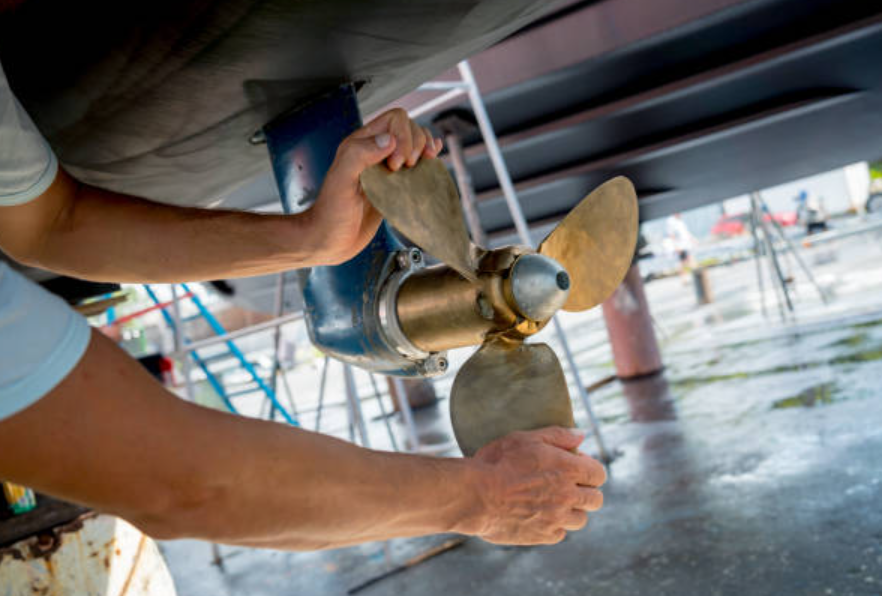Have you ever wondered why some sailboats seem to glide effortlessly year after year, while others are perpetually docked, awaiting repairs? Believe it or not, 50% of boating breakdowns could be avoided with regular sailboat maintenance.
Whether you’re a new boat owner or a seasoned sailor in need of a refresher, understanding the basics of upkeep can make all the difference.
If you’ve always dreamed of cruising across crystal-clear waters, with the wind filling your sails, owning a sailboat unlocks a world of adventure, but like any trusted companion, it requires proper care.
Regular sailboat maintenance can prevent breakdowns on the water and this guide is your roadmap to keeping your vessel in top shape, whether you’re a seasoned sailor seeking a refresher or a new boat owner eager to dive in.
By prioritizing sailboat upkeep, you’ll ensure not only the safety of yourself and your crew, but also extend the life of your boat, protect its value, and most importantly, experience the peace of mind that comes with a craft you can rely on.
Contents
Importance of Sailboat Maintenance

When you prioritize maintenance, you’re not just ticking off a checklist; you’re ensuring safety on the water. Proper care prevents equipment failure and avoids accidents, making each voyage as smooth as the last.
Moreover, regular upkeep isn’t just about immediate benefits; it’s an investment in your sailboat’s future. By maintaining your vessel, you extend its lifespan and preserve its resale value, ensuring that your sailboat remains a prized asset for years to come. And let’s not forget the peace of mind that comes from knowing your boat is in top condition.
With a well-maintained sailboat, you can set sail with confidence, free from the stress of unexpected issues, and fully enjoy the freedom of the open sea.
Essential Sailboat Maintenance Tasks
Keeping your sailboat in top condition is all about routine. Here’s a breakdown of essential maintenance tasks categorized by frequency, along with actionable steps to guide you:
Daily Tasks
Visually inspect hull, deck, and rigging for damage: Look for cracks, loose fittings, frayed lines, or anything that seems out of place. Early detection prevents minor issues from turning into major problems.
Check bilge pumps for proper function: Bilge pumps are your boat’s defense against accumulating water. Run them briefly to ensure they’re working smoothly and bilge areas are clear.
Ensure all lines and knots are secure: Verify that docking lines, halyards, and sheets are properly secured and free of frays or tears.
Weekly Tasks
Rinse sails with freshwater to remove salt buildup: Salt can damage sails over time. A quick freshwater rinse after each sail helps preserve their lifespan.
Wipe down deck and cockpit to remove dirt and debris: Dirt and grime can build up on deck surfaces. A regular wipe down keeps your boat looking good and prevents wear on deck materials.
Flush engine with freshwater (if applicable): Flushing your engine with freshwater after saltwater use removes corrosive salt deposits that can damage internal components.
Monthly Tasks
Lube deck winches and other moving parts: Regular lubrication keeps winches, hinges, and other moving parts functioning smoothly and prevents rust.
Inspect engine belts and hoses for cracks or wear: Cracked or worn belts and hoses can lead to engine failure. A monthly inspection helps catch these issues early.
Check battery terminals for corrosion: Corrosion on battery terminals can hinder starting power. Look for white buildup and clean terminals with a baking soda solution if necessary.
Seasonal Tasks
Deep clean and condition sails: Sails require a more thorough cleaning periodically to remove dirt, mildew, and stains. Apply sail conditioner to protect them from UV rays and wear.
Service engine according to manufacturer’s recommendations: Regular engine servicing, including oil changes and filter replacements, is crucial for optimal performance and longevity.
Winterize boat (if applicable): If you live in a climate with freezing temperatures, winterizing your boat protects its plumbing and engine systems from potential damage caused by freezing water.
Deep Dives into Key Areas

Now that you’ve mastered the essential maintenance routines, let’s delve deeper into specific areas of your sailboat:
Hull & Deck
Cleaning: Regularly wash your hull and deck with a mild boat soap to remove dirt, salt, and grime. Pay close attention to areas that accumulate grime, like the waterline and toe rail.
Inspection: Regularly inspect the hull for cracks, blisters, or signs of wear. Look for soft spots on the deck and check for delamination (separation of layers) on composite decks.
Antifouling: Apply antifouling paint to the hull below the waterline to prevent marine growth that can impede your boat’s performance. Choose the right paint type based on your sailing conditions and local regulations.
Repair: Minor cracks or gelcoat damage can be repaired using epoxy fillers and gelcoat patching compounds. More extensive repairs may require professional attention.
Rigging & Sails
Inspection: Regularly inspect your rigging for frayed wires, loose fittings, or corrosion. Check for chafe on sails and lines, and replace worn lines as needed.
Maintenance: Regularly lubricate winches and other moving parts to ensure smooth operation. Clean sails with freshwater after use, and apply sail conditioner to protect them from UV rays and wear.
Storage: When not in use, properly store sails in a cool, dry place away from direct sunlight. Rigging should be inspected and adjusted for tension periodically, even during storage.
Engine & Mechanical
Basic Checks: Before each sail, perform basic checks on your engine, including oil and coolant levels, battery voltage, and bilge pump functionality.
Fluid Changes: Regularly change engine oil, coolant, and transmission fluid according to the manufacturer’s recommendations.
Winterization (if applicable): If you live in a climate with freezing temperatures, winterize your engine by draining fluids, adding antifreeze, and fogging the cylinders to prevent corrosion.
Electrical & Electronics
Battery Care: Regularly check battery terminals for corrosion and clean them if necessary. Maintain proper battery voltage with a battery charger when not in use.
Wiring Inspection: Periodically inspect electrical wiring for damage or fraying. Loose or damaged wires can cause electrical malfunctions and even fires.
Troubleshooting: Familiarize yourself with basic electrical troubleshooting techniques to identify and fix minor electrical issues.
Proactive Maintenance Tips
Taking a proactive approach to sailboat maintenance will not only save you time and money in the long run, but also ensure you have a safe and reliable vessel for years to come. Here are some key tips:
Record Keeping: Develop a system for logging your maintenance activities. This could be a dedicated notebook, a spreadsheet, or a digital app. Recording details like tasks performed, dates, and products used helps you track your boat’s maintenance history and identify any recurring issues.
DIY vs. Professional: While many sailboat maintenance tasks can be tackled by do-it-yourselfers with some basic knowledge and tools, there are also situations where seeking professional help is crucial. Complex repairs, engine overhauls, or electrical system troubleshooting are best left to qualified marine mechanics or electricians.
Winterization Checklist (if applicable): For boaters in cold climates, proper winterization is essential to prevent damage from freezing temperatures. Here’s a dedicated winterization checklist to guide you:
- Drain engine fluids and replace with antifreeze.
- Pump antifreeze through the boat’s plumbing system.
- Disconnect batteries and store them in a warm, dry place.
- Winterize the toilet and holding tank (if applicable).
- Cover vents and hatches to prevent moisture buildup.
- Secure sails and rigging to prevent wind damage.
- Place a boat cover on your vessel for added protection.
By following these proactive tips, you can ensure your sailboat is well-maintained and ready for countless adventures on the water.
Conclusion
Regular sailboat maintenance isn’t just about keeping your vessel looking shiny; it’s about safety, longevity, and peace of mind.
By dedicating time and effort to these tasks, you’ll be rewarded with a boat that performs flawlessly, protects your investment, and lets you focus on the true joy of sailing – exploring the open water with confidence and creating lasting memories.
So, grab your toolbox, embrace the proactive approach, and get ready to set sail on countless adventures with your trusty sailboat by your side.
